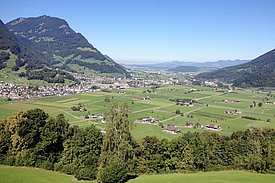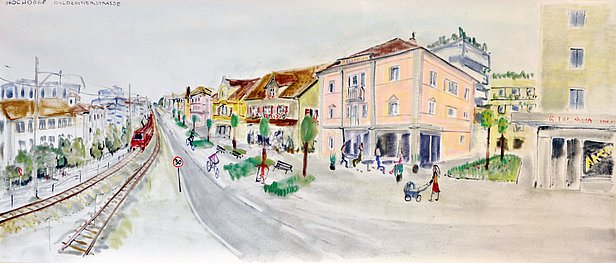In Switzerland, settlements are spreading further and further. The interdisciplinary research programme "Room for people and nature" investigated how settlement development influences quality of life and biodiversity. To this end, it closely involved practitioners.
Contents ¶
Settlements change the landscape and lead to the loss of recreational areas and natural habitats. Urban sprawl in Switzerland still worries both spatial planning experts and the general public. Our large-scale research programme "Room for people and nature" investigated the effects of urban development on people's quality of life and on biodiversity. The programme has been completed, but the findings and recommendations it produced are still relevant.
The focus was on regions under the strongest pressure of urban sprawl: the rural areas bordering the large urban fringes. The interdisciplinary programme was developed in close cooperation with practitioners and implemented in four case study regions. There, workshops were held with decision-makers from these regions. Within the framework of these workshops, the participants developed visions and scenarios for future urban and landscape development together.
Clustered villages and small towns promote quality of life and biodiversity ¶
The research programme showed that Switzerland's polycentric pattern of human settlements is ideal for meeting the diverse demands of people on their residential environment. Most of the Swiss population prefers smaller and cozy settlement units such as villages and small towns. Clustered settlements not only promote people's quality of life, but also benefit native biodiversity. Expanding urban areas cause a shift of species towards generalists. Dispersed settlements aggravate this effect: They accelerate the decline in specialized species and facilitate the spread of non-native species.
The research programme has provided various recommendations for urban and landscape planners and decision-makers from administration and politics. For example, the model of the small town should be the guide for in-fill development and densification of villages. Urban development should be concentrated on regional centres that are well served by public transport. In small villages, gaps between buildings should be filled first, without a high degree of densification. However, their residents will have to do without extended public transport. Recommendations about how to implement these principles in planning practice and policy are given in the practice-oriented publications.


